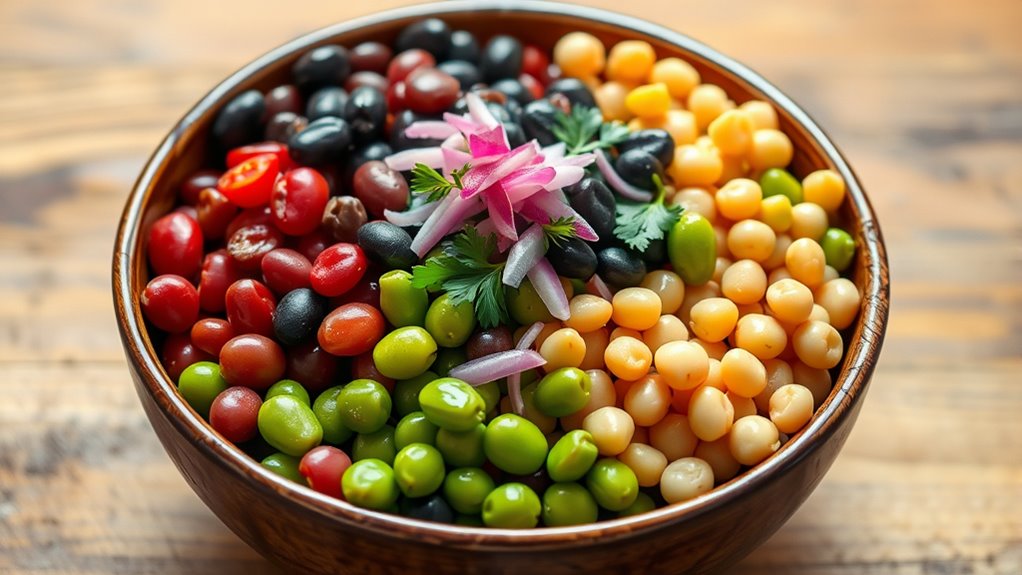A no-sugar four-bean salad is quick and protein-packed. Start with 2 cups cooked beans (kidney, black, or chickpeas) and 1 cup diced tomatoes. Add cucumbers, corn, and onions for crunch. Whisk a light olive-oil vinaigrette with lemon juice, salt, and pepper, then toss everything in a large bowl. Let flavors meld in the fridge if you can. This balanced mix supports fiber and steady energy, and more tips await if you keep reading.
Ingredients and Quantity
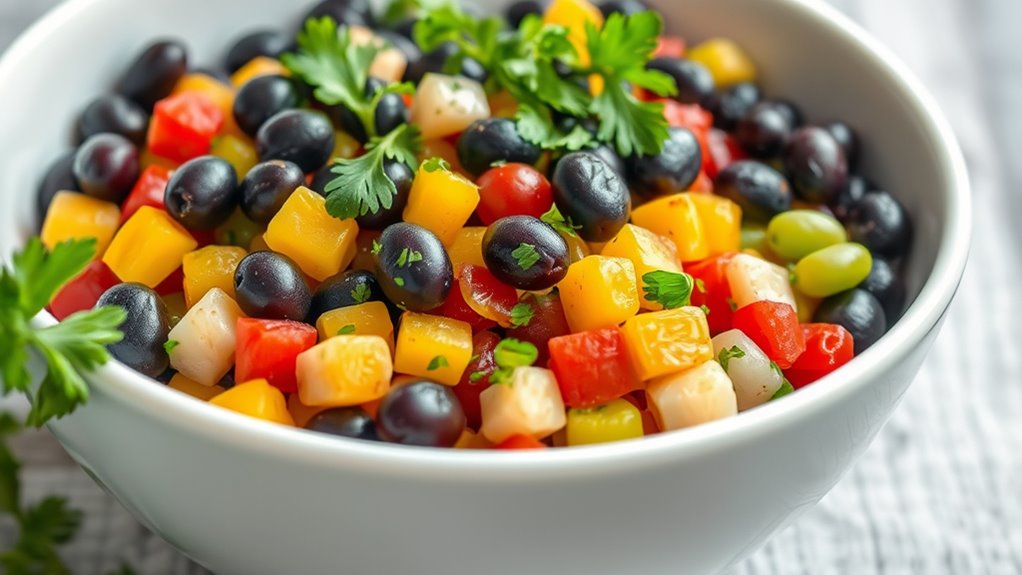
The Bean Salad uses a simple mix of beans, vegetables, and a light dressing, so start with 2 cups of cooked beans (such as kidney, black, or chickpeas) and 1 cup of diced tomatoes. You’ll choose complementary ingredients that boost texture and temperature: diced cucumbers, corn kernels, and finely chopped onions or herbs. Prioritize balance, not excess, and note the quantity of each item to maintain consistency. For dressing, keep it light with olive oil, a splash of lemon, and a pinch of salt. The goal is clarity and freedom in flavor.
| Item | Quantity |
|---|---|
| Beans | 2 cups |
| Tomatoes | 1 cup |
Preparations
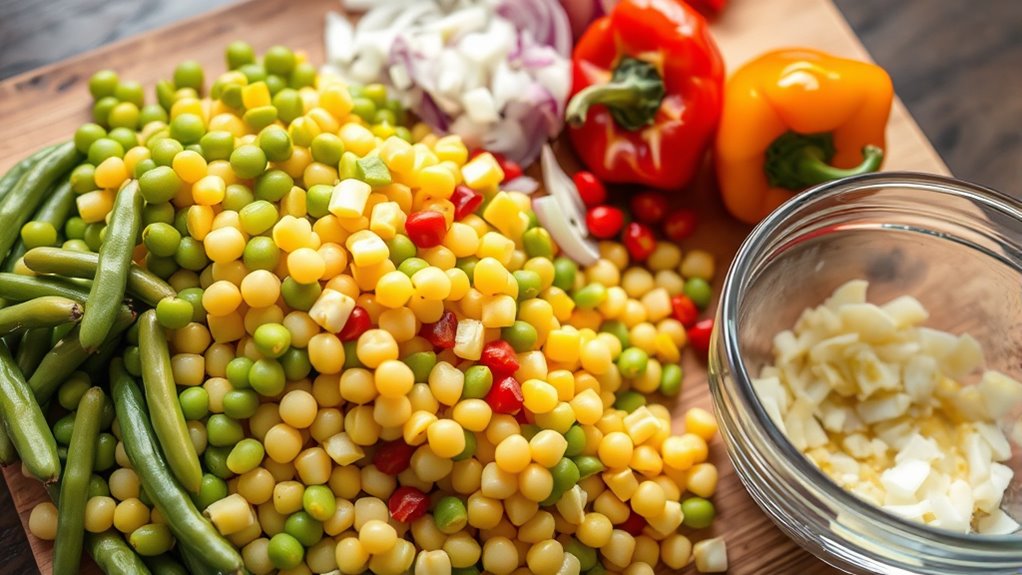
To begin, rinse and drain any canned beans or drain and cool freshly cooked ones, then pat them dry to remove excess moisture. You’ll then combine beans with a light dressing and crisp, vibrant vegetables. Use preparation techniques that preserve texture while minimizing added sugar or fats, such as whisking a simple vinaigrette and tossing gently. Aim for balanced flavor combinations: tangy citrus, bright herbs, and a pinch of salt to heighten natural sweetness. Let flavors meld briefly in the fridge if you have time, but serve promptly if you don’t. Taste as you go, adjusting acidity and salt to your preference. This approach supports a flexible, freedom-loving approach to healthy eating, without sacrificing clarity or precision.
Kitchen tools or Kitchenware Required
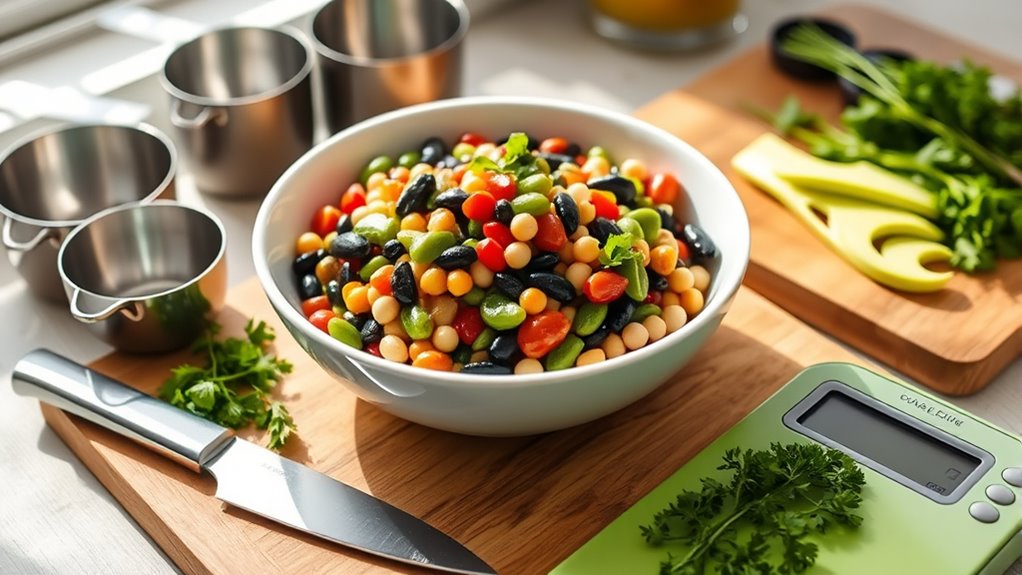
For preparing this bean salad, you’ll want a few dependable kitchen tools that keep things simple and efficient. You’ll rely on a sharp chef’s knife, a sturdy cutting board, a large bowl, a measuring cup, and a colander. These kitchen utensils help you prep quickly and cleanly, without fuss. Essential tools keep prep consistent, especially when you’re aiming for fresh flavors and low sugar.
| Tool | Purpose | Benefit |
|---|---|---|
| Chef’s knife | Trim and chop | Precise cuts, safer handling |
| Cutting board | Stable workspace | Protects counters, reduces slips |
| Large bowl | Mix and marinate | Easy, single-spot mixing |
| Measuring cup | Control portions | Consistent ingredients |
| Colander | Rinse and drain | Clean, ready-to-use beans |
How to Cook
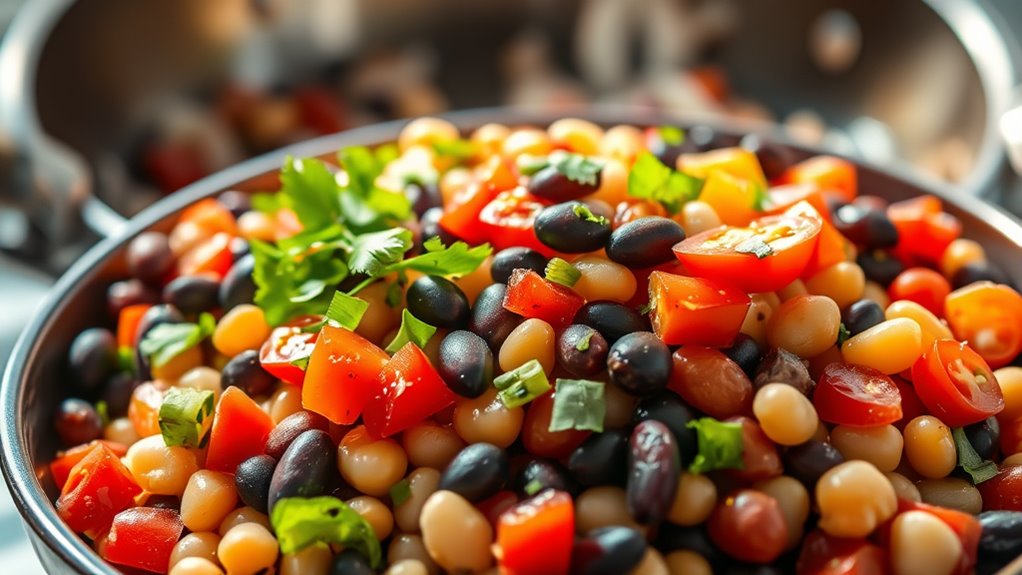
- Grill, simmer, or blend the beans with care, depending on your salad’s desired texture.
- Warm a splash of olive oil in a pan.
- Add diced onion, garlic, and a pinch of salt.
- Sauté until the onion is translucent.
- Fold in the beans and warm through without mashing.
- For a smoother texture, mash a portion of the beans and mix back in.
- Finish with lemon juice or vinegar and a pinch of pepper for brightness.
- Avoid overcooking by paying attention to timing and restraint.
- Pair the beans with complementary ingredients like tomatoes, herbs, or peppers.
- Keep the salad vibrant and balanced while preserving its no-sugar promise.
How to Serve
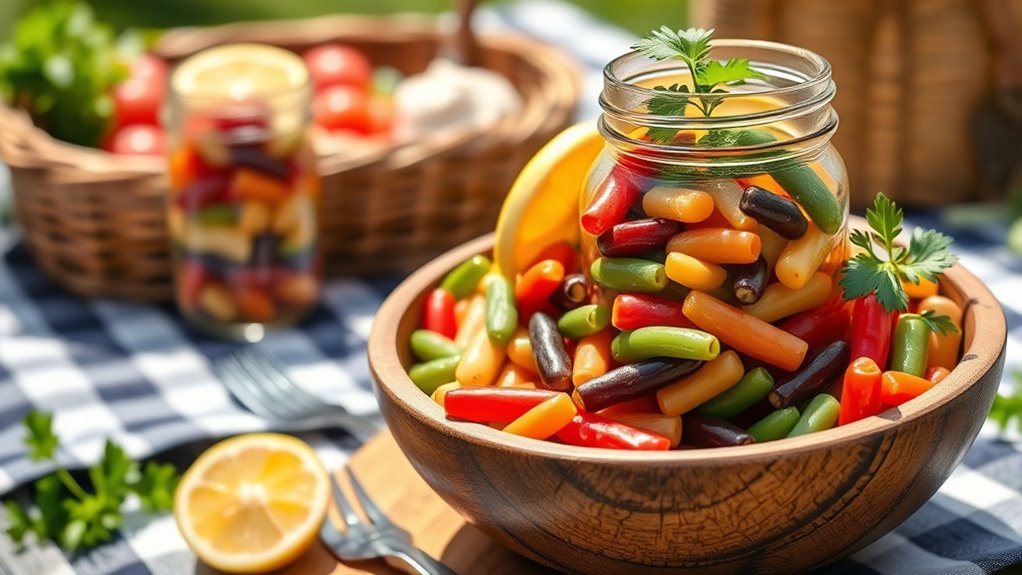
Bean salad is versatile beyond serving straight from the bowl, so you can tailor how you present it to fit the occasion. You’ll keep it simple for weeknights by serving in a single large bowl, then portioning onto plates to control portions. For picnics, use mason jars or a zip-top container with a small fork, layering colors to highlight the beans. If you’re entertaining, present on a platter with fresh herbs and lemon wedges to invite aroma and brightness. For a lighter vibe, offer individual cups with a drizzle of olive oil and vinegar on the side. Serving suggestions emphasize freshness, contrast, and ease. Presentation ideas focus on visibility of ingredients and practical, no-fuss access.
Tips
To get the most from your bean salad, start with high-quality, well-drained beans and dressings in balance—too much oil can weigh it down, while too little leaves flavors flat. Here are practical tips you can rely on: taste as you go, adjusting acidity with a splash of lemon or vinegar rather than sugar. Use herbs and crisp vegetables for brightness without adding sugar. For healthy alternatives, consider olive oil spray or avocado oil with a pinch of salt. When you need flavor without excess calories, employ bold condiments like Dijon, mustard, or garlic. Ingredient substitutions are your friend: swap chickpeas for white beans, cherry tomatoes for cucumber, or add shredded kale for texture and nutrition.
Food Value and Benefit
This prepared bean dish is a nutritious and satisfying meal option packed with essential nutrients that support overall health and well-being. It provides a balanced combination of plant-based protein, fiber, complex carbohydrates, vitamins, and minerals, making it ideal for sustained energy and wellness.
Benefits of eating this recipe include:
- Supports muscle maintenance with rich plant protein
- Promotes digestive health and feelings of fullness due to high fiber content
- Provides steady energy through complex carbohydrates with a low glycemic impact
- Enhances heart health with minerals and heart-friendly nutrients
- Supports blood sugar regulation and weight management
- Contributes to improved gut function and regularity
This dish is an excellent source of important vitamins and minerals such as:
- Folate (Vitamin B9), which aids in cell growth and metabolism
- Iron, essential for oxygen transport in the blood
- Magnesium, important for muscle and nerve function
- Potassium, which helps maintain healthy blood pressure levels
- Small amounts of Vitamin B6 and zinc, supporting immune and metabolic health
Frequently Asked Questions
Can I Use Canned or Fresh Beans Interchangeably?
Yes, you can mix canned and fresh beans, but consider texture and flavor targets. Canned benefits include convenience and consistency, while fresh offers stronger flavor and texture. You’ll want to drain canned beans and adjust seasoning for fresh flavors.
Should I Rinse Beans Before Mixing the Salad?
Yes, rinse beans before mixing. Rinsing benefits include removing excess starch and reducing sodium, improving flavor. It also helps control bean textures, avoiding mushy or overly firm bites, so you get cleaner, fresher salad while you stay free.
How Long Does It Last in the Fridge?
In the fridge, your 4-bean salad lasts about 3 to 5 days. For best texture, store in an airtight container. Storage tips: keep it cold and away from strong odors. Shelf life depends on ingredients and cleanliness.
Can I Add Dairy or Fruit to the Salad?
You can, but with limits: dairy or fruit changes can unbalance flavors and texture; about 25–30% of people report dairy-free salads tasting fresher. Consider dairy alternatives or fruit choices that complement beans and dressing.
Is This Salad Suitable for a Vegan Diet?
Yes, this salad is vegan-friendly, provided you skip animal-derived ingredients. It can deliver vegan protein and plant-based nutrients when you include beans, seeds, or a light dressing, supporting your freedom to choose vegan protein sources.
